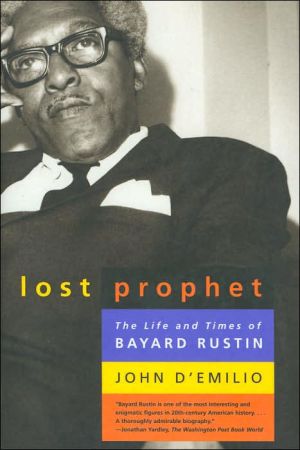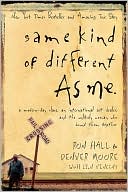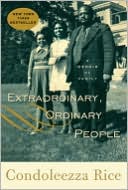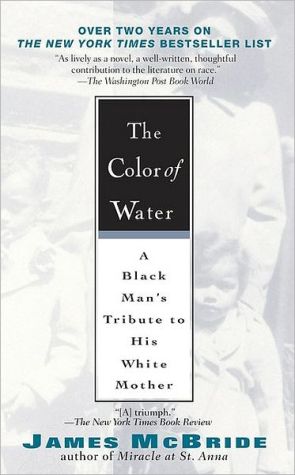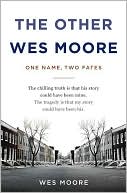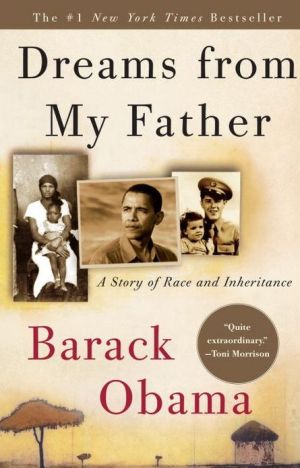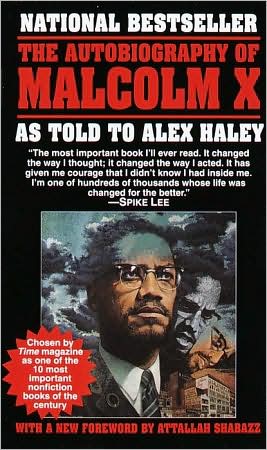The Lost Prophet: The Life and Times of Bayard Rustin
One of the most important figures of the American civil rights movement, Bayard Rustin taught Martin Luther King Jr. the methods of Gandhi, spearheaded the 1963 March on Washington, and helped bring the struggle of African Americans to the forefront of a nation's consciousness. But despite his incontrovertibly integral role in the movement, the openly gay Rustin is not the household name that many of his activist contemporaries are. In exploring history's Lost Prophet, acclaimed historian...
Search in google:
One of the most important figures of the American civil rights movement, Bayard Rustin taught Martin Luther King Jr. the methods of Gandhi, spearheaded the 1963 March on Washington, and helped bring the struggle of African Americans to the forefront of a nation's consciousness. But despite his incontrovertibly integral role in the movement, the openly gay Rustin is not the household name that many of his activist contemporaries are. In exploring history's Lost Prophet, acclaimed historian John D'Emilio explains why Rustin's influence was minimized by his peers and why his brilliant strategies were not followed, or were followed by those he never meant to help.The Washington PostAt the end as at the beginning, [Rustin] was true to himself and his convictions. John D'Emilio has done him, and us, the great good service of showing how deep those convictions ran and how utterly central they were to his splendid life. — Jonathan Yardley
Lost Prophet\ The Life and Times of Bayard Rustin \ \ By John D'Emilio \ University of Chicago Press\ Copyright © 2004 John D'Emilio\ All right reserved.\ ISBN: 0226142698 \ \ \ \ Introduction\ "Who is Bayard Rustin?" \ I have been asked this question enough times to know that "Bayard Rustin" is not a household name in America.\ Rustin was not a president, not a four-star general, not a celebrity. He did not die young under tragic circumstances, as did Martin Luther King, Jr., and Malcolm X, two more renowned African Americans whom we do remember. Instead, depending on the circumstances, Rustin was dismissed during his lifetime as a Communist, a draft dodger, or a sexual pervert - and sometimes all three. None are characteristics designed to win a revered place in our nation's history.\ Less than two decades after Rustin's death, his enormous contributions to American life - in the struggle for racial equality, a peaceful international order, and a democratic economic system - have been covered over, his name mostly forgotten, his contribution to a world worth living in largely obscured. Except for the briefest walk-on part as the man-behind-the-scenes of the historic 1963 March on Washington, Rustin hardly appears at all in the voluminous literature produced about the 1960s. Instead, he has become a man without a home in history.\ This neglect of Rustin is tragic because he is, I believe, a vitally important historical character. He deserves a place in our national memory as one of the key figures of his time. More than anyone else, Rustin brought the message and methods of Gandhi to the United States. He insinuated nonviolence into the heart of the black freedom struggle. He presided over the transformation of direct action tactics from the cherished possession of a few initiates to its embrace by millions of Americans. He resurrected mass peaceful protest from the graveyard in which cold war anticommunism had buried it and made it once again a vibrant expression of citizen rights in a free society.\ Rustin was a visionary. He believed that violence could never bring justice and that war could never bring peace. He stood by these convictions during the "good war" against Hitler, during the first decades of the cold war, and during the years of a spiraling nuclear arms race. Rustin was an internationalist long before globalization became a catchword in American life. He viewed nationalism as a destructive force in human affairs and conducted himself as if world citizenship already existed. He organized and led protests not only in the United States but across several continents as well.\ Rustin was smart. His associates recognized him as a master strategist of social change. He dedicated himself to figuring out how human beings, individually and collectively, could do more than simply go about the business of living. He studied the workings of insurgent movements around the globe so that he might better understand how permanently to alter powerful institutions and longstanding national policies.\ Rustin was inspirational to the countless thousands who knew him. He wished more than anything else to remake the world around him. He wanted to shift the balance between white supremacy and racial justice, between violence and cooperation in the conduct of nations, between the wealth and power of the few and the poverty and powerlessness of the many. He believed that the most antagonistic human relationships - between a white sheriff and a black sharecropper, between the European colonizer and the Africans he lorded over, between the filthy rich and the struggling poor - could be transformed. He believed that ordinary individuals could make a vast difference in the world, and he communicated this conviction widely.\ Rustin was also wildly controversial in his lifetime. He had been a member of the Young Communist League in the 1930s. He refused the call to defend his country after the United States had been attacked at Pearl Harbor. Segregationists, of whom there were many, and anti-Communists, of whom there were even more, always had ammunition to fire in Rustin's direction. Rustin repeatedly found himself the target of the FBI, local police, conservative journalists, State Department officials, and anyone else beating the drums of patriotic fervor during the cold war decades.\ Rustin had ways to counter these vulnerabilities. His Quaker beliefs were a legitimate explanation for his pacifism. He publicly broke with and repeatedly repudiated the Communist Party. His pacifist friends and his associates in the black freedom movement applauded his integrity and courage, and they stood by him when cold warriors and defenders of the racial status quo launched attacks on him.\ Not so for his homosexuality. If Rustin has been lost in the shadows of history, it is at least in part because he was a gay man in an era when the stigma attached to this was unrelieved. There were no islands of safety, no oases of acceptance in the decades when Rustin was forging a career as an agitator for justice. In the mid-twentieth century, every state criminalized homosexual behavior. Gay men could be -and commonly were - arrested for touching hands in a bar, for asking another man to spend the night, and for doing in parked cars in secluded places what young heterosexuals did all the time. Rustin's sexual desires brought him trouble repeatedly. Police locked him up. Judges humiliated him in the courtroom. Newspapers exposed him. Worst of all, friends, mentors, and close allies repeatedly abandoned him because how he chose to love and whom he chose to desire put him beyond the pale of what America at that time defined as acceptable.\ Initially I came to Rustin's life because I wanted to write about the 1960s. At the time, and forever since, the sixties were recognized as a watershed decade in the United States. Look at a photograph of almost anything from 1958 and find a comparable one for 1972. The visual evidence of change will be striking. It was a time of revolutionary upheavals that left almost nothing in America untouched. Americans fought each other in the 1960s, and they have continued to fight about the meaning of the 1960s ever since.\ One common plot line of the sixties traces a trajectory that moves from good to bad. The good sixties were composed of heroic student sit-ins and freedom rides, the crusading rhetoric of the New Frontier and the Great Society, the inspiration of an interracial March on Washington and a war against poverty. Trailing right behind were the bad sixties of war in the jungles of Southeast Asia, American cities in flames and occupied by troops, students shot dead on their own campuses by the National Guard and, when it all ended, the stench of Watergate. Why did sweet dreams of hope metastasize into nightmares?\ Rustin first commanded my attention because, just as the good sixties were about to turn toward the bad, he authored a bold manifesto titled "From Protest to Politics." More than a generation after its writing, it still reads as a compelling piece of political analysis. Rustin addressed himself to the question of how the growing number of Americans who were protesting racial injustice might move from the margins of the political system to the centers of power. He argued that out of the civil rights movement there could emerge a coalition of conscience capable of becoming a new progressive majority in the United States. His strategy rested on a bedrock optimism that the American political system was flexible and responsive enough to embrace change of revolutionary dimensions. He believed that peaceful democratic means were adequate to the task of remaking relations of power. Rustin also had faith that individual human beings themselves were just as flexible and that, over time, they could be moved to recognize the worth of every one of their fellows and act accordingly.\ Rustin's argument was not a mushy utopian exhortation in favor of universal fellowship and peace on earth. It was detailed, thoughtful, logical, and measured in its assessment of the political landscape. Reading it for the first time a quarter-century after it was published, I experienced a thrill of excitement, as if the moment when he wrote was still before me and the opportunities he sketched out still waited to be grasped. Yet the moment was not seized. Militant activists in the civil rights movement and burgeoning New Left scorned Rustin's analysis. They saw it as evidence that this Gandhian organizer of many years' standing, seasoned by decades of campaigns and two dozen arrests, had lost his radical edge. In what may be one of the cruelest ironies of this historical era, conservatives on the right rather than progressives on the left took up elements of Rustin's ideas and ran with them. Conservatives were the ones who used the electoral system to become the governing majority over the next generation.\ I knew that Rustin was gay when I began to study his life. It was an important part of what attracted me to his story. I had already written about the history of homosexuality in America, and I knew the intensity of persecution directed not only at Communists and fellow travelers during the McCarthy era but at sexual nonconformists as well. I also knew that Rustin had been convicted for public lewdness in the 1950s and that in the final days before the March on Washington, segregationists exposed the incident. Yet I assumed that "the closet" was so sturdily constructed at this time and that habits of discretion in sexual matters operated so pervasively that Rustin's sexuality would serve at most as an interesting backdrop to the public career. I expected it to be tucked into the corner marked "private life" and imagined that it would only occasionally intervene in the telling of his story.\ I now know differently. The boundary between public and private proved very porous in Rustin's life. As I dug through the evidence and interviewed those who knew him, it became abundantly clear that his sexuality - or, more accurately, the stigma that American society attached to his sexual desires - made him forever vulnerable. Again and again, Rustin found his aspirations blocked, his talents contained, and his influence marginalized. Yes, he also found ways to carve out a significant role in the movements he held dear. But he had to find ways to do this so that unpredictable eruptions of homophobia might not harm these causes. It is little wonder that so few Americans today know who he is.\ And the disavowal of Rustin continues. As I write this introduction, parents of school-aged children in his hometown of West Chester, Pennsylvania, are rebelling against proposals to rename the local high school after its most accomplished alumnus.\ The book that I have written is not what I had originally intended. It still has much to say about the 1960s and the stirring events of that decade. But any thoughts I entertained that Bayard Rustin could be a vehicle for my purposes long ago fell victim to the dramatic nature of his story. Lost Prophet is centrally about Rustin - the impact he had on events and the struggles he faced to sustain a role for himself in the most important movements of his times. To take Rustin seriously - and, trust me, he insists that we do take him seriously - requires paying as much attention to the decades when he toiled in obscurity as to the 1960s, when he had his moment as a national figure.\ A biographer could not ask for a more compelling subject than Rustin. His story is heroic and harrowing. It abounds with triumphs and trials. It combines the narrative contours of the saint and the sinner. Rustin displays courage under circumstances that are terrifying to contemplate. His life reminds us that the most important stories from the past are often those that have been forgotten and that from obscure origins can emerge individuals with the power to change the world.\ \ \ Continues...\ \ \ \ Excerpted from Lost Prophet by John D'Emilio Copyright © 2004 by John D'Emilio.\ Excerpted by permission.\ All rights reserved. No part of this excerpt may be reproduced or reprinted without permission in writing from the publisher.\ Excerpts are provided by Dial-A-Book Inc. solely for the personal use of visitors to this web site. \ \
Introduction 1. "Any Road Will Take You There," 1912-1934 2. "A Young Radical," 1934-1941 3. "A Way of Life," 1941-1943 4. "An Extremely Capable Agitator," 1944 5. "Hard and Bitter Experience," 1944-1946 6. "The Gadfly Which Has Stirred Men into Action," 1946-1947 7. "Mad Enough to Do Something Desperate," 1947-1948 8. "An Iron Lung of Militarism," 1948-1952 9. "Bayard's Trouble," 1952-1953 10. "I Can Again Be Useful," 1953-1955 11. "No Force on Earth Can Stop This Movement," 1955-1957 12. "More Going On Than Most People Would Gather," 1957-1959 13. "An Employee of Others," 1959-1960 14. "Ours Is Not a World-Shaking Project," 1960-1962 15. "One of the Great Days in American History," 1963 16. "On the Threshold of a New Political Movement," 1963-1964 17. "From Protest to Politics," 1964-1965 18. "In the Shadow of War," 1965-1967 19. "A Strategist Without a Movement," 1966-1968 20. "Freedom Is Never a Final Act," 1969-1987 Acknowledgments Notes Bibliography Index
\ Los Angeles Times - Tom Wicker\ "Lost Prophet is one of the saddest stories you will ever read. Rustin was a charismatic leader, a lifelong pacifist, an imprisoned conscientious objector during World War II, and a leading American teacher of Gandhian nonviolence . . . But Rustin was also gay, decades before the Supreme Court legitimated private sexual activity, and that cost him the backing of some radicals, black as well as white, for whom he had been an eloquent and courageous leader for nearly 40 years. . . . D'Emilio succeeds in detailing a highly useful life and--a prime task of biography--in redeeming a nearly forgotten figure and assigning him a proper role in an era that becomes more beclouded and mythologized with every passing year."\ \ \ \ \ New York Times Book Review - Michael Anderson\ "Bayard Rustin became famous for working behind the scenes. The tactics of public protest that became familiar in the 1960s marches on Washington, Freedom Rides, sit-ins, passive resistance, civil disobedience were pioneered and refined by Rustin two decades earlier. Indeed, through his decisive influence on Martin Luther King Jr., Rustin created the model for the social movements of post-World War II America--civil rights, antiwar, gay liberation, feminist."\ \ \ Torso"A lively, detailed, immensely readable account of this key figure of the 20th century, including information about his sexual life and relationships."\ \ \ \ \ Journal of the History of Sexuality"D'Emilio's work contributes greatly to the literature of Bayard Rustin and the civil rights movement. . . . Thanks to D'Emilio, not only have we found a 'lost prophet,' but we have a much better understanding of why he was lost in the first place."\ \ \ \ \ New York Review of Books"D'Emilio's biography is an important book about an important man, well researched, with particularly perceptive insights into gay culture in America as well as providing a solid account of the history of the peace movement and the civil rights struggle."\ \ \ \ \ Los Angeles Times"Lost Prophet is one of the saddest stories you will ever read. Rustin was a charismatic leader, a lifelong pacifist, an imprisoned conscientious objector during World War II, and a leading American teacher of Gandhian nonviolence . . . But Rustin was also gay, decades before the Supreme Court legitimated private sexual activity, and that cost him the backing of some radicals, black as well as white, for whom he had been an eloquent and courageous leader for nearly 40 years. . . . D''Emilio succeeds in detailing a highly useful life and--a prime task of biography--in redeeming a nearly forgotten figure and assigning him a proper role in an era that becomes more beclouded and mythologized with every passing year."\ — Tom Wicker\ \ \ \ \ \ New York Times Book Review"Bayard Rustin became famous for working behind the scenes. The tactics of public protest that became familiar in the 1960s marches on Washington, Freedom Rides, sit-ins, passive resistance, civil disobedience were pioneered and refined by Rustin two decades earlier. Indeed, through his decisive influence on Martin Luther King Jr., Rustin created the model for the social movements of post-World War II America--civil rights, antiwar, gay liberation, feminist."\ — Michael Anderson\ \ \ \ \ \ Torso"A lively, detailed, immensely readable account of this key figure of the 20th century, including information about his sexual life and relationships."\ — Ian Young\ \ \ \ \ \ Journal of the History of Sexuality"D''Emilio''s work contributes greatly to the literature of Bayard Rustin and the civil rights movement. . . . Thanks to D''Emilio, not only have we found a ''lost prophet,'' but we have a much better understanding of why he was lost in the first place."\ — Steve Estes\ \ \ \ \ \ New York Review of Books"D''Emilio''s biography is an important book about an important man, well researched, with particularly perceptive insights into gay culture in America as well as providing a solid account of the history of the peace movement and the civil rights struggle."\ — Gerald Early\ \ \ \ \ \ The Washington PostAt the end as at the beginning, [Rustin] was true to himself and his convictions. John D'Emilio has done him, and us, the great good service of showing how deep those convictions ran and how utterly central they were to his splendid life. — Jonathan Yardley\ \ \ \ \ Publishers WeeklyOn the eve of the 40th anniversary of the 1963 civil rights march on Washington, D'Emilio takes an unflinching look at the complicated life of the man who made it happen. That Rustin (1912-1987), a black civil rights activist, is not a household name has less to do with his accomplishments than that he was openly gay in an era that criminalized homosexuality, according to the author. D'Emilio (Sexual Politics, Sexual Communities: The Making of a Homosexual Minority in the United States, 1940-1970) believes the lack of attention paid to Rustin in 1960s history books is tragic, and he examines, in a refreshingly unsympathetic fashion, the reasons behind the snub, most notably Rustin's 1953 arrest for lewd vagrancy in Pasadena, Calif. Drawing on interviews with Rustin's colleagues, friends and lovers, D'Emilio explores all facets of the activist's life, from his Quaker upbringing and early imprisonment for draft dodging to his close but tenuous relationship with Martin Luther King Jr. "Rustin came to King... with a history that threatened as much as it promised" is how D'Emilio describes their first encounter. The book's dry chronological accounts are alleviated by personal anecdotes and D'Emilio's own heartfelt descriptions, resulting in a thorough, if at times heavy and unfocused, portrait. Rather than a generalist's account, the book seems oriented toward closing the book on lingering objections to Rustin as a major figure fit for mainstream textbooks. Historians will hopefully take note; meanwhile, a recent PBS documentary feels much more immediate on Rustin's achievements, relationships and way of being in the world. (Aug. 11) FYI: A wonderful assemblage of polemical reportage, position papers and episodic memoirs, Time on Two Crosses: The Collected Writings of Bayard Rustin, will also be available this fall, edited by UCLA Law and African American Studies professor Devon Carbado and Donald Weise, who co-edited Black Like Us. (Cleis, $16.95 paper 400p ISBN 1-57344-174-0; Sept.) Copyright 2003 Reed Business Information.\ \ \ \ \ Library JournalAlthough seldom in the popular spotlight during his life, Bayard Taylor Rustin (1912-87) deserves to stand as a titan in the American movement for peace and social justice, argues historian D'Emilio (Univ. of Illinois, Chicago). This detail-crammed narrative chronicles Rustin's unrelenting work for nonviolence and the bearing of his homosexuality. From Pennsylvania school-aged radical, Rustin emerged as a committed Quaker and preeminent philosopher and theoretician of the Civil Rights Movement. Hailed as an American Gandhi, he was the visionary strategist behind the triumphant March on Washington for Jobs and Freedom in August 1963 and then the Poor People's Campaign of 1968. Apparent ambivalence over the Vietnam War eclipsed his star, as being gay so long had, D'Emilio shows. Adding to his earlier works on civil rights leadership and sexual politics, D'Emilio illuminates the connections and contexts of Rustin's work and sexuality and contributes to works by Jervis Anderson, James Haskins, and Daniel Levine in the inappropriately scant work available of so significant a figure. Highly recommended for African American, civil rights, and 20th-century U.S. history and biography collections.-Thomas J. Davis, Arizona State Univ., Tempe Copyright 2003 Reed Business Information.\ \ \ \ \ Kirkus ReviewsSympathetic, probing biography brings homosexuality to the fore as a factor in the black activist's seminal but largely forgotten role in the civil-rights movement. Rustin's sexual orientation was impediment enough in the 1930s, contends D'Emilio (History and Gender Studies/Univ. of Illinois, Chicago), who has written extensively on the evolution of gay culture and politics. But Rustin (1912-87) built a dossier with many other components later antagonists (including Senators Jesse Helms and Strom Thurmond) happily used against him. He had a youthful flirtation with the Communist Party, though he left it disillusioned, and his pacifist Quaker upbringing in Pennsylvania led him to resist the draft and receive a three-year prison sentence in 1944. D'Emilio builds an intimate history of his subject's early struggles against racism, showing how Rustin's achievements through skill and force of personality were often threatened and sometimes scuttled by lapses in sexual discretion at a time when gays were open at their peril. His nonviolent precepts were key to the formation SCLC and CORE, but his 1953 arrest for indecency made him a pariah even to those who had come to depend on his talent. Rustin took years to work his way back to the forefront, only to attract in 1960 the envy of grandstanding Harlem congressman Adam Clayton Powell, who threatened to go public with information (later debunked) that Rustin and Dr. Martin Luther King had been homosexual partners. The cowed King allowed Rustin to resign as his assistant, but two years later he was back as the prime organizer for the massively effective 1963 March on Washington. Although he later told an interviewer that King "did not have theability to organize vampires to go to a bloodbath," Rustin never took personal credit for the March, D'Emilio states; up to his death, at age 75, he always claimed that the nationally televised white violence in Birmingham, Alabama, was the crucial factor in bringing demonstrators to Washington. Eye-opening look at the personal ordeal underlying a revolutionary quest.\ \
